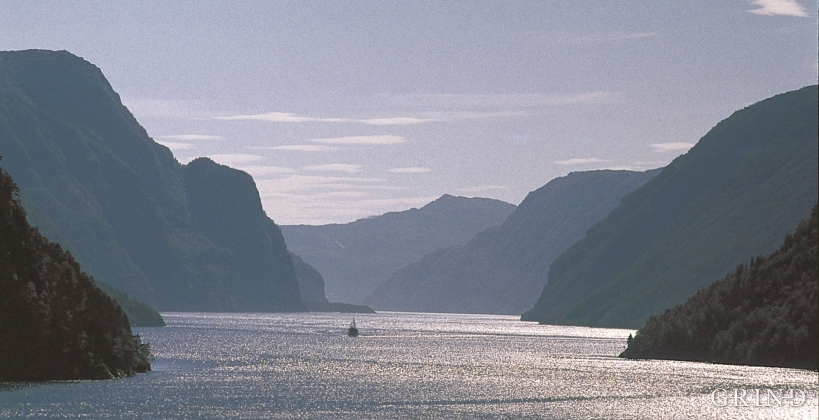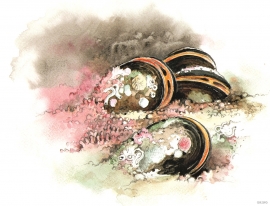Published: 10.08.2015 | Author: Stein Byrkjeland
Veafjord, a fjord with a north-south direction, was created along a marked fault zone in the mountains. This is one of the few places the harbour seal often used to be seen in Hordaland. (Helge Sunde)
WILL THE HARBOUR SEAL RETURN?
Some decades ago, Veafjord and the currents in toward the bigger rivers were the most likely places to see harbour seals in Hordaland. In the summer flocks lay on the beach and waited for the salmon to trickle in. Sometimes they also followed the fish a little way up the river.
After many years in a row with very little salmon the harbour seals have disappeared from Veafjord. At present it is more of an exception to see a seal far inside of these fjord branches, and it is not very common far out on the coast, either. The population is much smaller in Hordaland than in the neighbouring county. In Sunnfjord, for example, the species is common, and there is also a stable and viable population far up in Nærøyfjord.
The coastal fisherman are probably happy that the populations are low. The seal likes to find nets in the sea in search of easy fish to catch, and it is also a main host for the parasite nematodes. Where there are a lot of seals there may be a lot of parasitic worms in the fish. The parasitic nematode is not dangerous, but neither does it do wonders for the appetite. Fish that are infected with the parasite cannot be sold on the market.
Far back in time the harbour seal had its breeding ground inside of Vaksdal Fjord. Perhaps this was the case also in the 1970s, the last time flocks of seal were seen at Eidslandet and Straume. If there is a rise in the salmon populations again it is not impossible that the seal populations also will increase. Even though the seal likes salmon and other noble fish, it is not a threat to the stocks. A demise in the salmon population is a whole other matter. The harbour seal is our most place bound seal species. When it occasionally takes to wandering, this happens because its food source has collapsed, not because it has eaten all that was available.
Horse Mussels
In the 1890s, 600-700 men took part in the gathering of horse mussels in the fjords around Osterøy as supplementary income in winter. The horse mussel looks like a large mussel shell and grows at about 10 metres depth in areas with a good current.
Catch implements varied with how deeply the horse mussels lived - specially-made sticks, tongs and ploughs were used. They used a sea binocular at the water's surface and got a hold of the shell with the long tools. The innards were salted in barrels. With a production of 10,000 - 20,000 barrels in season the catch was a good supplementary income. The shells were sold as bait, especially to the Lofoten fisheries. The horse mussel shells were highly prized and they nearly went extinct for a period.




